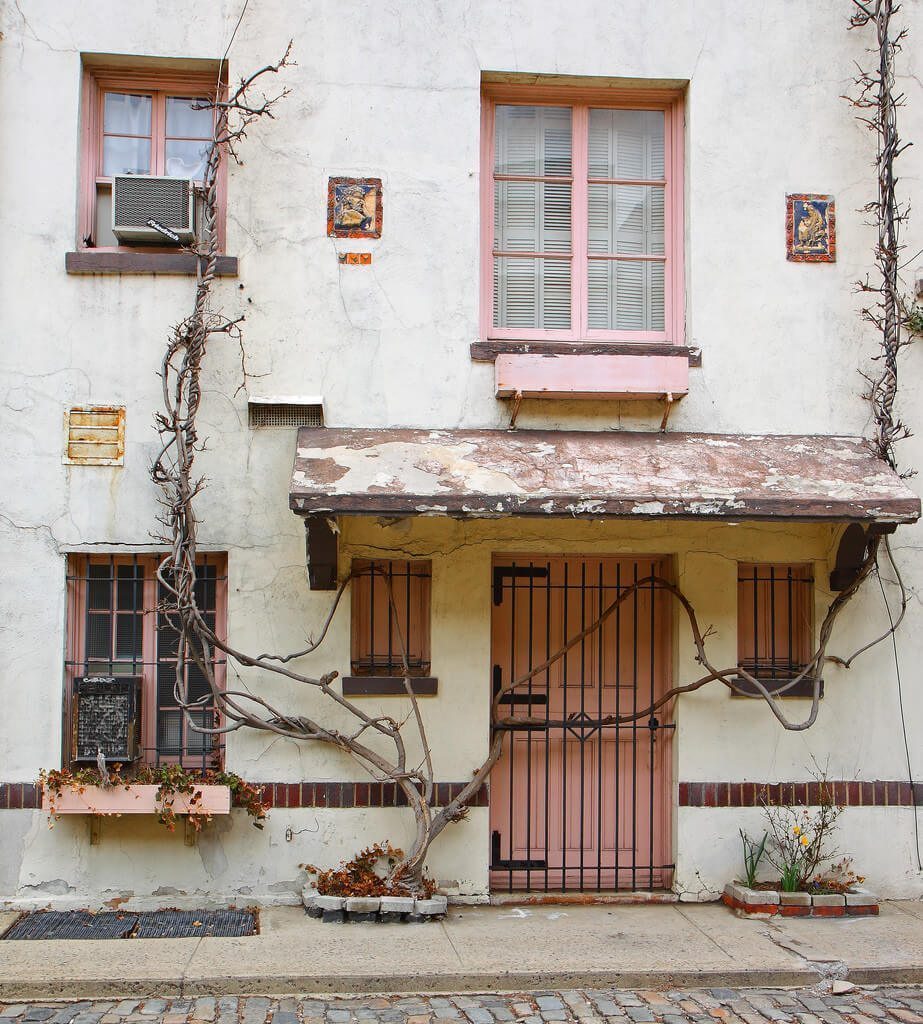Table of Contents Show
New York is a hectic town complete with busy streets, crowds of people, and honking horns. But quieter addresses lie nestled in between the bustling avenues, and a few undiscovered alleys tuck quietly into what feels like secret locations. These hidden mews will go unnoticed unless you know their whereabouts and make it a point to find them. Here are six tiny NYC streets worth seeking that exudes the charm of yesteryear.
Table of Contents
Washington MewsWashington Mews
Owned today by NYU, the historic row houses were originally horse stables for local residents in the 18th century. Situated between Fifth Avenue and University Place close to Washington Square Park, the private cobblestone street was home for many artists beginning in 1916, but today houses college faculty.
Pomander WalkPomander Walk
Most Upper West Siders have no clue that their neighborhood boasts this miniature street. Located between 94th and 95th Streets and Broadway and West End, you’ll find 27 Tudoresque homes constructed in the 1920s. Originally floor-through apartments, today, many are single-family residences. This out-of-sight gem achieved city, state, and national landmark status in 1982.
MacDougal AlleyMacDougal Alley
This alley got its start as stables and eventually was transformed into artist studios. You’ll find MacDougal Alley just off MacDougal Street and south of 8th Street in the heart of The Village. The secret street was the last to be lit by gas lamps into the 1930s. Famous denizens have included Jackson Pollack, Isamu Noguchi, and Gertrude Vanderbilt Whitney, founder of the Whitney Museum of Art.
Warren PlaceWarren Place
The 11 ½ feet wide Queen Anne and Romanesque style townhouses built in the late 19th century as workingmen’s cottages. English-style courtyards, arched windows, iron gates, and the gabled entrances will take you back in time. Warren Place is on the western side of Brooklyn’s Cobble Hill neighborhood.
Patchin PlacePatchin Place
This gated cul-de-sac off 10th Street between Greenwich and Sixth Avenues remains true to its 19th-century appearance with one of few gas street lamps left in New York City. The Greenwich Village mews was originally home to artists and writers such as E. E Cummings and Theodore Dreisher. Still, today you’ll find a combination of residents and therapists on this street. Hence, the new name is “therapy row.”
“Patchin Place through the gate” by Beyond My Ken – Own work. It is licensed under CC BY-SA 3.0 via Wikimedia Commons.
Sylvan TerraceSylvan Terrace
Twenty wooden row houses line Sylvan Terrace, which is in the Morris-Jumel Historic District in Washington Heights. Built-in 1882, the alley was a carriageway leading to the Morris-Jumel Mansion, George Washington’s command post during the Revolutionary War. The homes fell into disrepair in the 20th century but restored to their original grandeur in the 1980s. The cobblestones and gas street lamps are still intact on Sylvan Terrace.
Grace Court AlleyGrace Court Alley
This Brooklyn Heights treasure boasts carriage houses that date back to the 1850s. Sandwiched between Remsen and Joralemon Streets, many of the buildings retain their original details such as stable wooden doors, wooden window frames, and doorknockers. Previously used as a mews for Grace Church, garages were also part of the original design of these homes, and albeit small, to own one is a true luxury in New York City.

